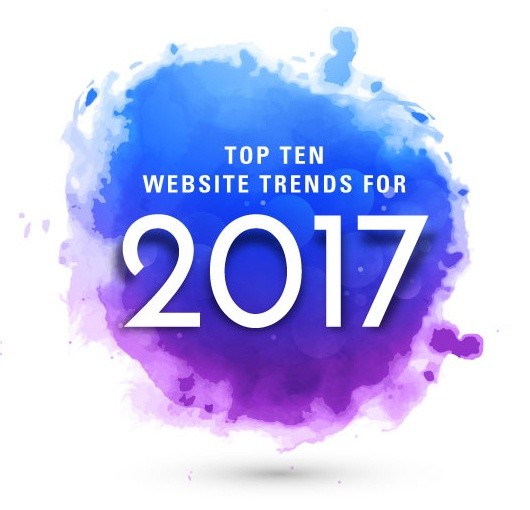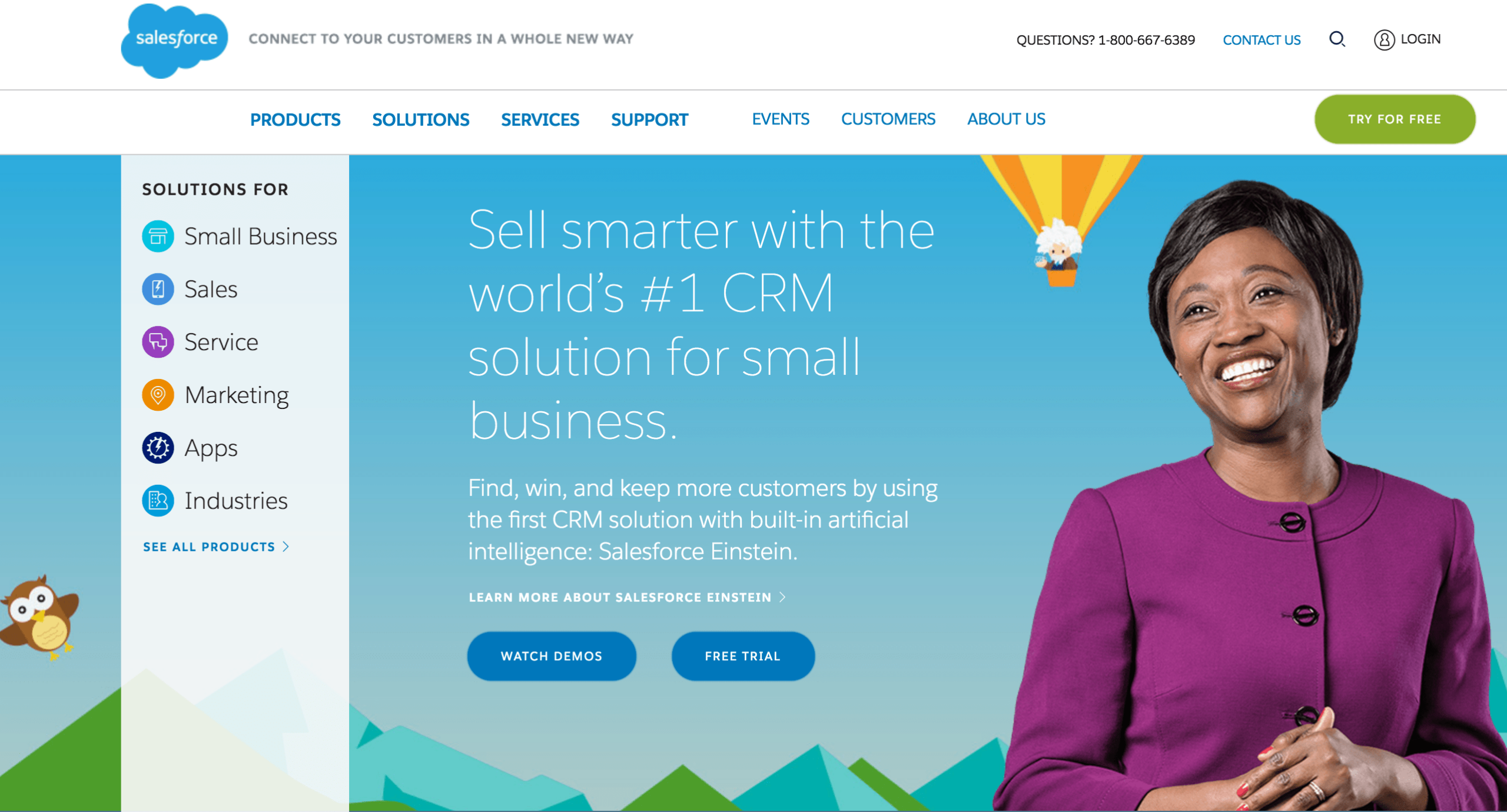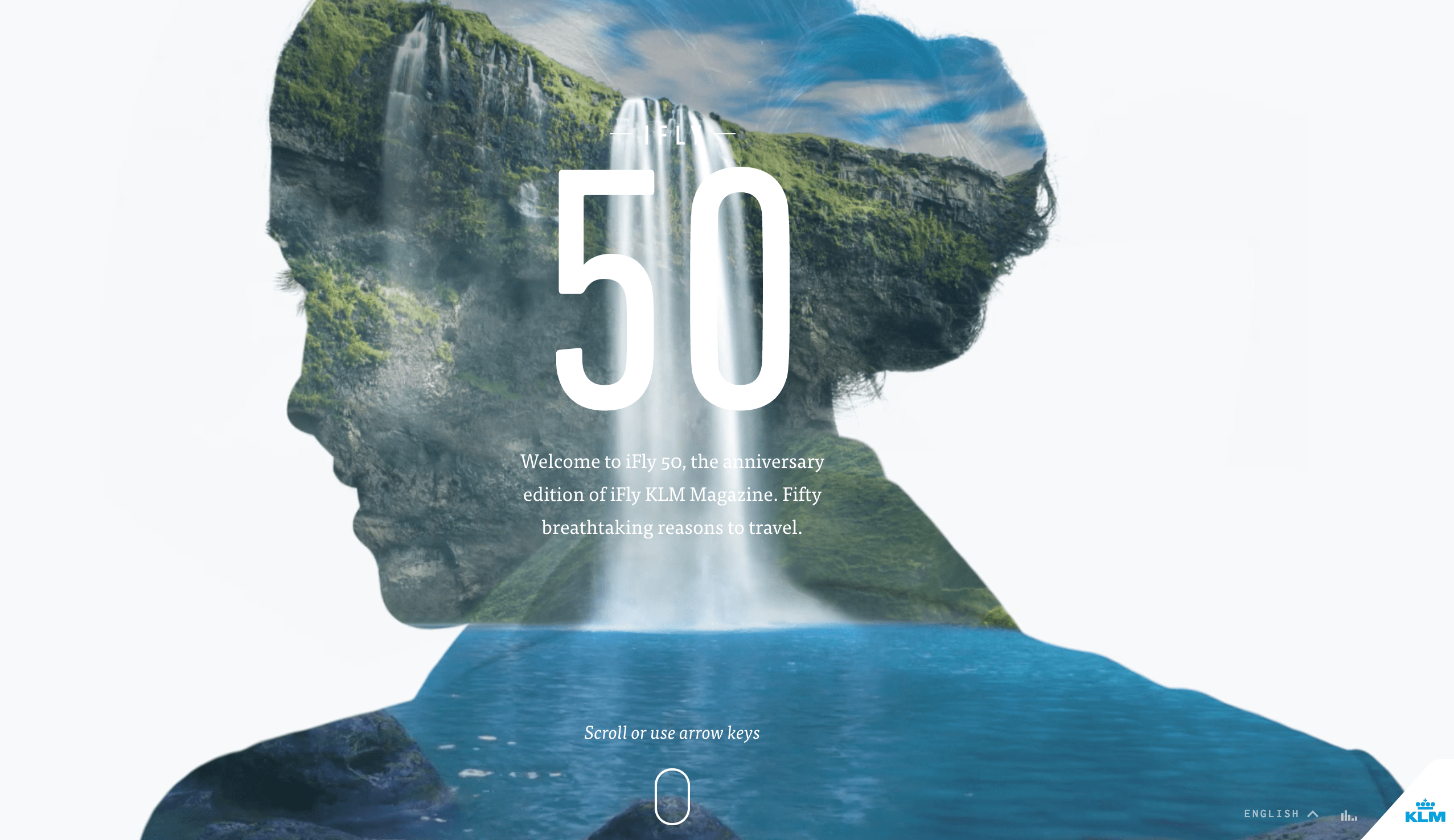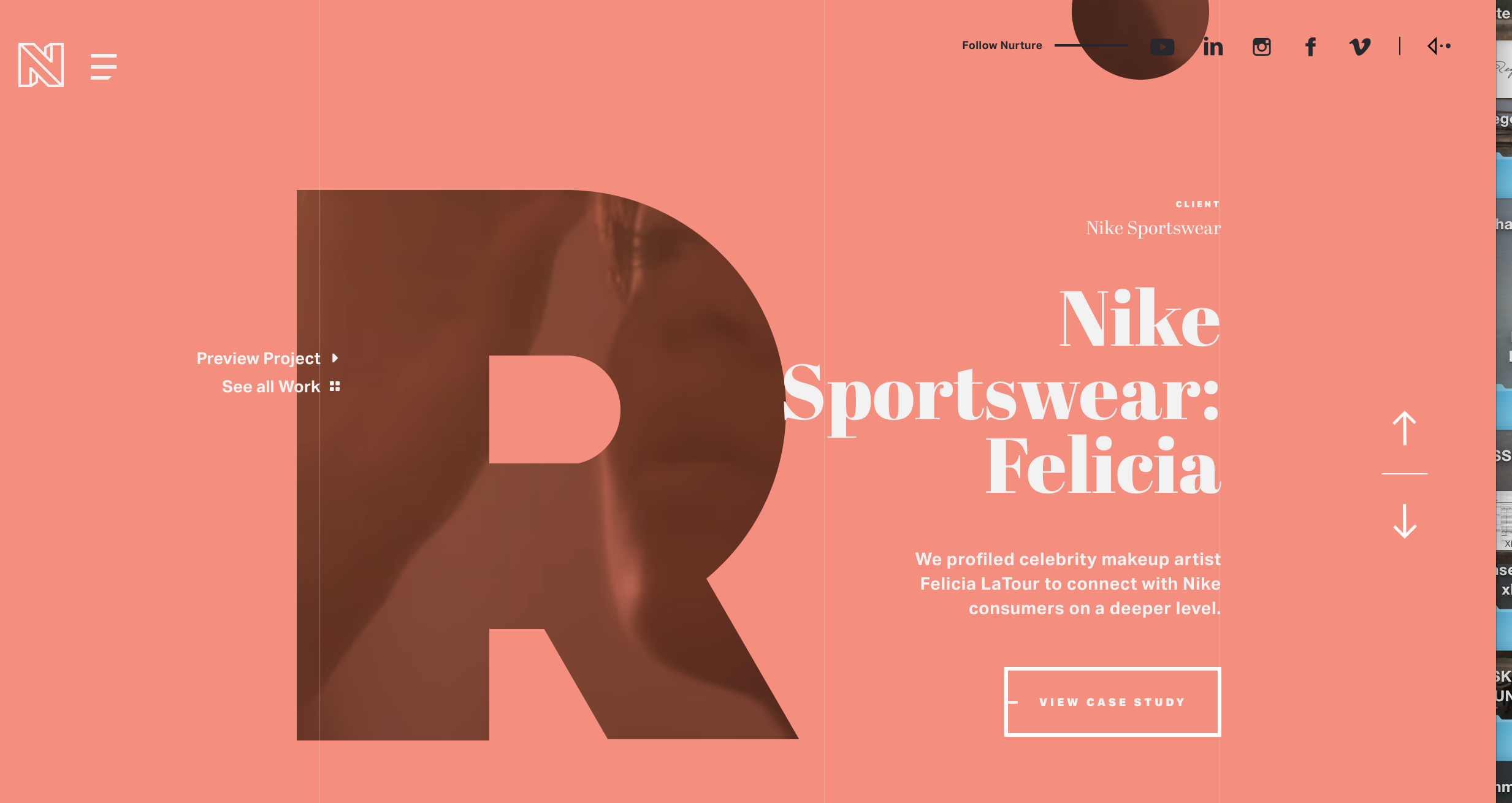The 2017 Website Trends You Most Need to Know
 1. “Web Personality” Gains Momentum
1. “Web Personality” Gains Momentum
Pendulums swing back when they’ve reached their apex. The trend toward template-driven websites has yielded a “digital blandscape” of websites indistinguishable from one another whether viewed from a content, user experience or design perspective. Businesses are starting to notice. Some business leaders are swearing off the de rigueur use of stock photography and are seeking a new visual language —using more illustration, custom photography, video and distinctive typography — to better be able to express their unique personalities. Businesses are once again seeking to define a unique “voice” in their verbal language as well. Together, these things comprise an emerging trend called “web personality,” and it’s rising in importance.
2. Illustration Lights Up the Web
 Expect to see more illustrative solutions and illustration mixed with photography in the coming year, such as the home page for salesforce.com. I have heard business leaders lament the overuse of stock photography and the yearning for more unique, personalized imagery to capture their stories in ways that generate return visits and ultimately more leads. Illustration is a great storytelling medium for the web and can be employed in infographics, icons, animated videos and purely to tell a story with personality.
Expect to see more illustrative solutions and illustration mixed with photography in the coming year, such as the home page for salesforce.com. I have heard business leaders lament the overuse of stock photography and the yearning for more unique, personalized imagery to capture their stories in ways that generate return visits and ultimately more leads. Illustration is a great storytelling medium for the web and can be employed in infographics, icons, animated videos and purely to tell a story with personality.
3. Real Photography Returns
 In the latter half of 2016, more of our clients have been using real photography of their companies including candids, portraits and images from laboratories and other business situations. There has been a particular interest in building out the HR/Careers area of websites to provide a real flavor of their businesses in order to aid recruiting. Along with the editorial style trend of bold photography and mixing in illustration, we are seeing both photography and video being used in interesting ways such as the above example from KLM. This is a strong trend that will grow in 2017.
In the latter half of 2016, more of our clients have been using real photography of their companies including candids, portraits and images from laboratories and other business situations. There has been a particular interest in building out the HR/Careers area of websites to provide a real flavor of their businesses in order to aid recruiting. Along with the editorial style trend of bold photography and mixing in illustration, we are seeing both photography and video being used in interesting ways such as the above example from KLM. This is a strong trend that will grow in 2017.
4. Typography Talks
 Typography is one of the invaluable tools for giving your website some sense of personality. There has been an explosion of web compatible fonts that can express any kind of personality. Along with real photography, illustration and copy with a point-of-view, expect to see more creative, editorial style, eye-catching typography in 2017. It’s nice to see sophisticated typography styles such as the above image, usually relegated to fancy print pubs, find their way to the web. Caution: It takes a skilled eye and design training to use typography in a controlled and sophisticated way. In the hands of an amateur, funky fonts will make your site appear dated or off-brand.
Typography is one of the invaluable tools for giving your website some sense of personality. There has been an explosion of web compatible fonts that can express any kind of personality. Along with real photography, illustration and copy with a point-of-view, expect to see more creative, editorial style, eye-catching typography in 2017. It’s nice to see sophisticated typography styles such as the above image, usually relegated to fancy print pubs, find their way to the web. Caution: It takes a skilled eye and design training to use typography in a controlled and sophisticated way. In the hands of an amateur, funky fonts will make your site appear dated or off-brand.
5. Video Moves Audiences
 The statistics for interest and retention of video and animated video content have long been known and we predict that 2017 will be the tipping point in which video and animated video becomes mainstream in the B2B space. The ambient video that many of us found distracting and gratuitous or that loaded slowly on homepages will give way to more thoughtful execution that is only there in service to the story and/or overall brand. Look also for more creative applications of video such as video playing through masks of letter forms or other shapes, such as the example above.
The statistics for interest and retention of video and animated video content have long been known and we predict that 2017 will be the tipping point in which video and animated video becomes mainstream in the B2B space. The ambient video that many of us found distracting and gratuitous or that loaded slowly on homepages will give way to more thoughtful execution that is only there in service to the story and/or overall brand. Look also for more creative applications of video such as video playing through masks of letter forms or other shapes, such as the example above.
6. Thought Leadership Matters
As websites and marketing messages continue their march toward homogeneity, those same companies are starting to reject the marketing status quo of templated, stock photography websites with minimal content that scrolls forever. Instead, they will start emulating what some of the big companies are doing more successfully: looking within their organizations to identify and promote their thought leaders and socializing their content across the web, social media, video, speaking engagements and in some cases content hubs, to promote their unique points-of-view.
7. Responsive Design is Standard
![]() By now most businesses understand the need for a Responsive website because of their growing mobile audience and because Google renders the Search results for non-Responsive sites less visible to mobile visitors. Surprisingly, we still encounter some non-Responsive websites for B2B businesses that still view their websites as an online brochure that needs a grudging update every 6-10 years. While the “we don’t get business from the website” mentality still persists in B2B, a new generation of leaders is ascending for whom the value of a Responsive website as a lead generation vehicle is understood and incorporated into the marketing mix accordingly.
By now most businesses understand the need for a Responsive website because of their growing mobile audience and because Google renders the Search results for non-Responsive sites less visible to mobile visitors. Surprisingly, we still encounter some non-Responsive websites for B2B businesses that still view their websites as an online brochure that needs a grudging update every 6-10 years. While the “we don’t get business from the website” mentality still persists in B2B, a new generation of leaders is ascending for whom the value of a Responsive website as a lead generation vehicle is understood and incorporated into the marketing mix accordingly.
8. WordPress Themed Websites Rule
As a backdrop to the growth of “Web Personality” are WordPress Themes. WordPress Themes represent the inevitable disruptor to the field of website design. From our work with Clayton Christensen, who originated the term “Disruptive Innovation,” a Disruptive Innovation is usually a cheaper way to accomplish a task with quality that is “good enough.” The saturation of the web with WordPress-themed websites is a perfect example of a Disruptive Innovation that has become mainstream. WordPress themes offer a simple, pre-designed and programmed website format that provides a decent user experience and a look and feel that engenders the “Me too” response from most marketers that see them. For certain types of clients, and lower budgets, they are a good and cost-effective solution that we, among many others, will recommend.
 That said, templated websites are like the field of poppies in the Wizard of Oz; they’ve lulled marketers and web designers to sleep, thinking they’ve found the easy road to the Emerald City when in fact it has made them more like the automatons in the famous Apple “1984” commercial.
That said, templated websites are like the field of poppies in the Wizard of Oz; they’ve lulled marketers and web designers to sleep, thinking they’ve found the easy road to the Emerald City when in fact it has made them more like the automatons in the famous Apple “1984” commercial.
 Happily, some B2B marketers and designers are starting to “Think Different.” Although B2B business stories are often technical, telling that story in a way that cuts through the template monotony, istock credits and minimalistic text, requires them to define their brand personality — their values, ideals and higher purpose — in new, creative ways. Because the website is still the Numero Uno brand and marketing vehicle, “web personality” matters, perhaps more now than ever.
Happily, some B2B marketers and designers are starting to “Think Different.” Although B2B business stories are often technical, telling that story in a way that cuts through the template monotony, istock credits and minimalistic text, requires them to define their brand personality — their values, ideals and higher purpose — in new, creative ways. Because the website is still the Numero Uno brand and marketing vehicle, “web personality” matters, perhaps more now than ever.
9. Web Analytics Get Short Shrift
The irony is that in a business climate that often over-emphasizes analytics and misses real people, B2B marketers often pay scant attention to their website analytics after their sites go live. B2B marketing teams are perennially understaffed and over-booked. Measuring web traffic or optimizing content will continue to get back burnered behind client work. Hopefully, if the economy grows and marketing can add resources, we will see more attention paid to how site visitors are actually interacting with corporate content and start optimizing websites based on that data.
10. Content Marketing Struggles
In the B2B space, Content Marketing budgets will continue to grow for the huge, enterprise-level companies where thought leadership is a real differentiator. For small companies, content marketing in the form of huge amounts of generic content being generated to milk SEO ranking will continue clogging up the web sphere with textual and visual noise. The vast majority of marketers, whose businesses are between start ups and the enterprise level, will continue to find content marketing, which focuses on long-term value over short-term results, both hard to sell to their superiors and hard to sustain without more resources.
If you’d like a personal consultation about how these trends effect you and your company, give me a call: 617-553-5170 or email me.


